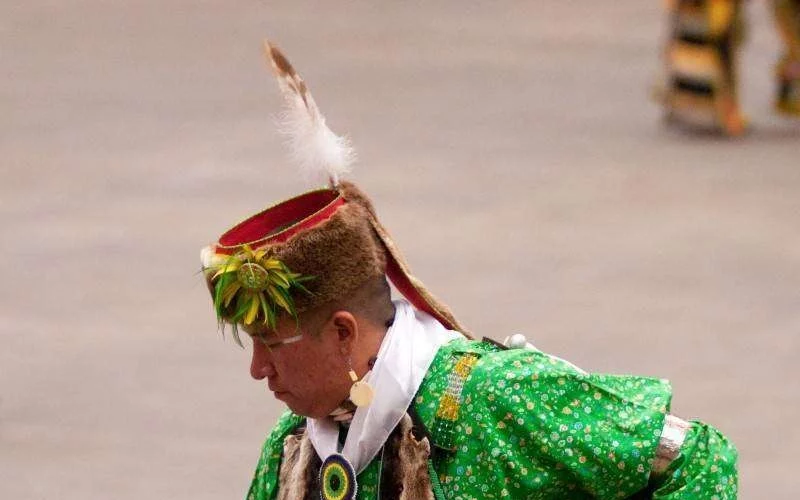Before the forced removal of the Ponca to Oklahoma Territory in 1877, appointed Tail Dancers among the Hethuska Society would carry the long-shafted, crook-ended Society Coup Sticks in battle and at Society Dance Ceremonies.
When the Hethuska Society would go out as a group to fight their enemies, the two appointed “Tail” men would carry the two society “coup sticks,” which served as banner staffs displaying the society’s war honors. These crooked staffs would be used to touch enemies in close combat, thus proving the Tail men’s bravery.
The crooked staffs would also be used to hoist a wounded companion off the battlefield and onto a horse without having to dismount. During a battle with their enemies, the Tail men of the Hethuska Society were said to have been “the bravest of fighters,” and would stay toward the back end of a war party and defend the “tail” of the group.
On rare occasions, if the enemy strength became too overwhelming these men volunteered to stay behind and fight the enemy, frequently sacrificing themselves, while the rest of the war party escaped to safety.
Usually there are at least two Tail Dancers appointed by the Ponca Hethuska Society Headman w
Today, the long crooked coup-stick, which sometimes reached a length of eight feet, is represented by a shortened, straight version about two and a half to three feet long called a “tail stick.”
Traditionally, this tail stick is carried as a symbol of his office only by the appointed Tail Dancers, by men who previously served as Tail Dancers, or by visiting Tail Dancers from other War Dance organizations.
During the Ponca Hethuska dance ceremony the Tail Dancers are obligated to dance on the repeated last verse or “tail” of all appropriate songs. This obligation represents the historical practice of the Tail men going back to the scene of a recent battle, at great risk to themselves, to recover any wounded or dead companions. It is further said that the practice of more traditional Tail Dancers, is to kick up one foot at the last beat of the drum at the end of a song’s tail. This would symbolize the way the Tail men warriors would kick the bodies of their fallen enemies on the battlefield to make sure they were dead and no longer a threat, while recovering their dead and/or wounded from the battlefield area. (Paul Roughface, Ponca, 1985)
Today, tail sticks are often made from wooden gun cleaning rods, and can be ornately carved with bits of otter fur and gourd-stitch beadwork decoration. Among the Ponca and Osage at one time, tail sticks were only carried by appointed Tail Dancers or men who had served as a Tail Dancer in the past. (Abe Conklin, Ponca/Osage, 1986) (Archie Mason, Jr., Osage, 1987)
However, in recent years many straight dancers not involved with a ceremonial dance organization, carry a tail stick in place of a mirror board, even if they have not served as a Tail Dancer.





frances sing
says:Comanche War Dance Society
Susan
says:This dance also belongs to the Omaha Tribe of Nebraska
Carol
says:Otoe Missouria Eloska has Tail Dancers as well.